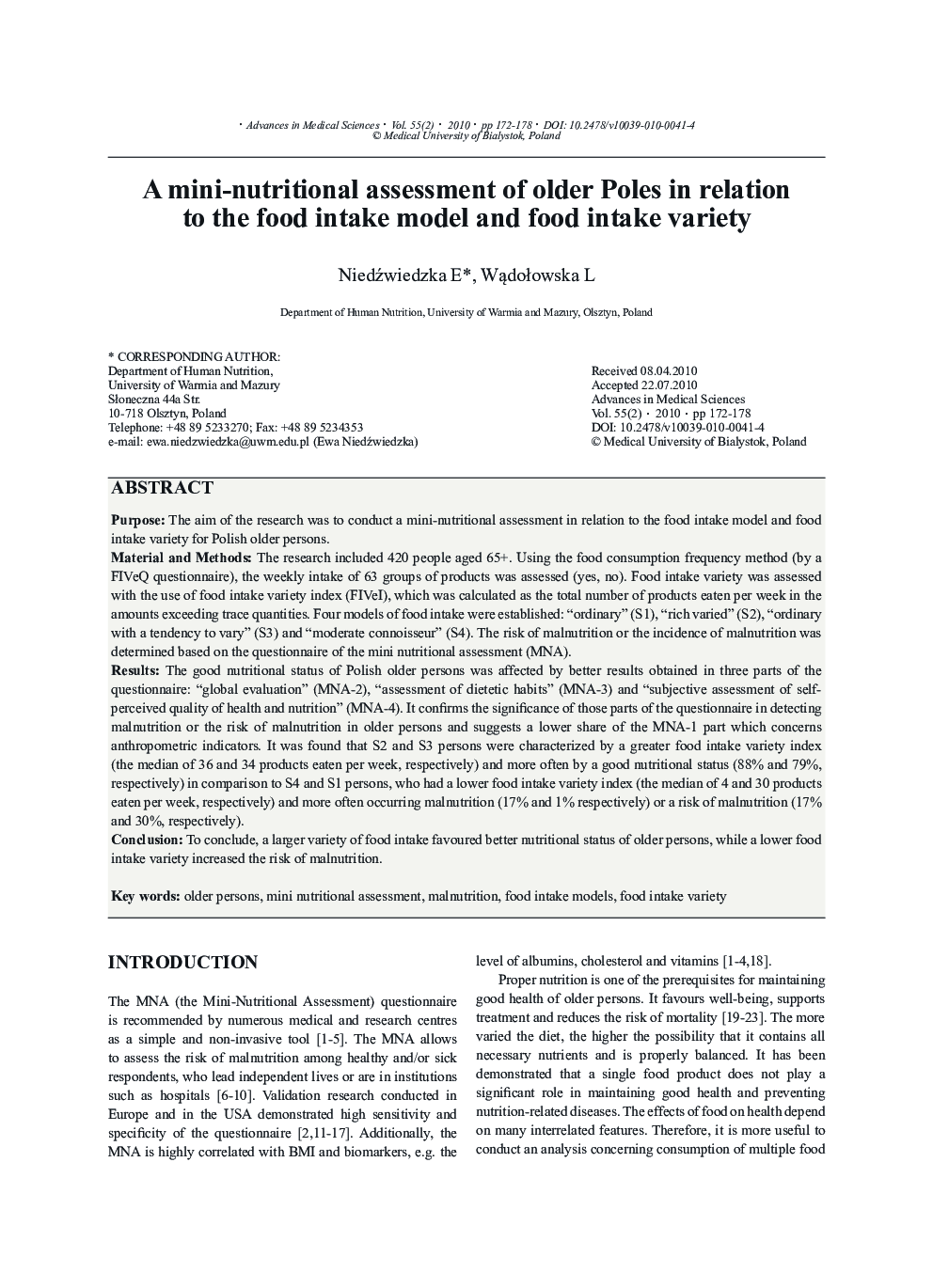| کد مقاله | کد نشریه | سال انتشار | مقاله انگلیسی | نسخه تمام متن |
|---|---|---|---|---|
| 2031860 | 1071611 | 2010 | 7 صفحه PDF | دانلود رایگان |

ABSTRACTPurposeThe aim of the research was to conduct a mini-nutritional assessment in relation to the food intake model and food intake variety for Polish older persons.Material and MethodsThe research included 420 people aged 65+. Using the food consumption frequency method (by a FIVeQ questionnaire), the weekly intake of 63 groups of products was assessed (yes, no). Food intake variety was assessed with the use of food intake variety index (FIsVeI), which was calculated as the total number of products eaten per week in the amounts exceeding trace quantities. Four models of food intake were established: “ordinary” (S1), “rich varied” (S2), “ordinary with a tendency to vary” (S3) and “moderate connoisseur” (S4). The risk of malnutrition or the incidence of malnutrition was determined based on the questionnaire of the mini nutritional assessment (MNA).ResultsThe good nutritional status of Polish older persons was affected by better results obtained in three parts of the questionnaire: “global evaluation” (MNA-2), “assessment of dietetic habits” (MNA-3) and “subjective assessment of self-perceived quality of health and nutrition” (MNA-4). It confirms the significance of those parts of the questionnaire in detecting malnutrition or the risk of malnutrition in older persons and suggests a lower share of the MNA-1 part which concerns anthropometric indicators. It was found that S2 and S3 persons were characterized by a greater food intake variety index (the median of 36 and 34 products eaten per week, respectively) and more often by a good nutritional status (88% and 79%, respectively) in comparison to S4 and S1 persons, who had a lower food intake variety index (the median of 4 and 30 products eaten per week, respectively) and more often occurring malnutrition (17% and 1% respectively) or a risk of malnutrition (17% and 30%, respectively).ConclusionTo conclude, a larger variety of food intake favoured better nutritional status of older persons, while a lower food intake variety increased the risk of malnutrition.
Journal: Advances in Medical Sciences - Volume 55, Issue 2, 2010, Pages 172–178